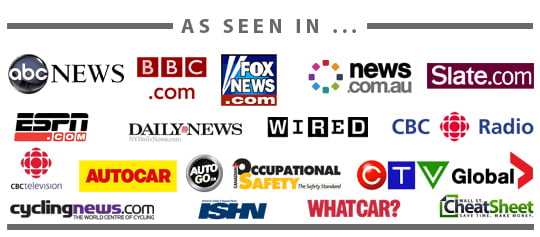Safety Meeting Planner & Agenda
Slow Down in Bad Weather!
Meeting Leader:
- Prepare in advance to make this meeting effective.
- Print and read over this entire agenda.
- Think about how you want to lead the meeting.
- Is there anything that is specific to your company or operation that you can include to personalize the information?
- Review the video for this session.
- Save the link to the video in your ‘Favourites’ folder on your browser for easy access.
- Open and then minimize the viewer just before the meeting to make the video introduction smooth.
Start Your Meeting!
Opening Statement:
You hear it on the radio traffic report whenever the weather gets bad. Accidents all over the place and everyone is blaming the weather! Weather is rarely the cause of an accident or incident. Instead, it’s usually a driver who doesn’t adjust his or her driving to accommodate the weather.
The Questions for this Meeting:
Q: What are the kinds of bad weather that we face in this area and what types of challenges do they present?
Answers could be:
- Snow – causes traction problems and often steering problems if there is accumulation on the road.
- Ice – causes traction and control problems. Black ice can be particularly hazardous because it doesn’t appear on the road.
- Heavy Rain and Flooding – can cause visibility problems and traction issues if it pools on the road. This situation can result in hydroplaning where the vehicle tires rise onto a cushion of water and lose contact with the road.
- Blowing Snow – can create whiteout conditions that are extremely dangerous.
- How many more can we identify?
Q: Why does too much speed cause problems in all of these (and other) extreme weather conditions?
Answers:
- As speed increases under any conditions, the energy stored by the vehicle movement also increases and needs to be somehow absorbed or dissipated enough to permit steering and braking on whatever road surface you are on regardless of the traction conditions. If traction conditions are poor and you are going too fast to stop or steer, you will end up out of control; either briefly until your speed comes down enough to regain traction, or long enough to crash. That’s just a fact. You can’t change the laws of physics, even if you are an excellent driver.
- A human being takes between 1/2 and 1 second to react to something when driving, and even more time to move the right foot to the brake pedal if stopping or braking is necessary. If your speed is too great in conditions where you can’t see well ahead, you will be overdriving your vision and will be unable to react fast enough to avoid problems. Again, just a fact of nature.
- Combine slippery surfaces and poor visibility with too much speed and you have a recipe for disaster.
Tailgate Tips:
- When you are driving under any condition, regularly assess your speed and adjust it as necessary to ensure that you are able to slow or stop to avoid a hazard.
- When you know that conditions are poor and you must drive anyway, leave early or call ahead to notify people that you may be late and take it slower.
- Choose the right lane on multilane roadways and just stay there unless traffic is moving impossibly slow. The guys in the fast lane on slippery roads are almost always going too fast to effectively control the vehicle in any situation except straight line, ‘no problem’ driving.
- Make sure that your lights are clean and are giving you the best possible light and drive at a speed that allows you to stop in the distance that you can see.
Introduce the Video:
Spencer McDonald discusses the importance of adjusting your driving to accommodate current weather conditions.
Practical Challenge:
For the next week make a conscious effort to check your speed regularly in good and bad conditions and try out driving a bit slower; especially in poorer conditions.
If you are a ‘left lane just go as fast as the fastest traffic’ kind of person, try out the right lane for a change and hang out with the ones going a little slower. It’s safer, and you may find that it is less irritating that you imagine when you choose it!
Think about how important it is for you to hurry and take chances in poor conditions. Ask yourself: is it worth investing a couple more minutes to ensure that I get home safe to my family?









